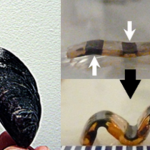 LSTI first Annual Research Forum
LSTI first Annual Research Forum
by Department of Biomedical Engineering
The Michigan Tech community viewed the first Annual Life Science and Technology Institute (LSTI) Research Forum that was held Friday September 25. Posters were in the Memorial Union Ballroom A1. Student awards were presented. Undergraduate and graduate students working in life science-related fields showed their research posters in separate competitions.
Sanaz Habibi (Adrienne Minerick’s M.D.-ERL Lab), PhD student in the Chemical Engineering department, won the grand prize for the best poster for her work on “Do Faradaic Reactions Cause Hemolysis in Non-Uniform Alternating Current Electric Fields?.”

Graduate Merit Awards winners for the Life Science and Technology Institute (LSTI) Research Forum indlude: Graduate students:
Ramkumar Mohan (Biology)—”MicroRNA-483, A Differentially Expressed MicroRNA Between Pancreatic Beta Cells and Alpha Cells,” Advisor: Zhang/Tang
Ni Fan (Chem)—”Glycan-Dependent Mutual and Reversible Sequestration,” Advisor: Dam
Robert Larson (KIP)—”High Salt Intake Augments Excitability of Pre-sympathetic PVN Neurons,” Advisor: Chen
The Undergraduate Student award winners included: Grand Prize: Jared Pecore (Biology)—”The Mechanisms Underlying α-Amanitin Resistance in Drosophila melanogaster: A Microarray Analysis,” Advisor: Werner
Undergraduate Merit Award: Dakota Anderson (KIP)—”Upper-Extremity Eccentric Exercise: Increases in Muscle Strength and Power at Moderate Training Intensities”

View Photo gallery of Life Science and Technology Institute (LSTI) Research Forum









